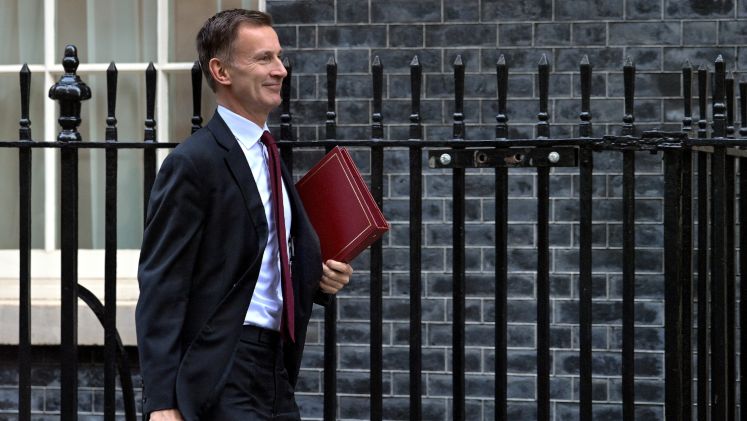
 It is important that we understand and do something about systemic risk, write Jon Danielsson and Jean-Pierre Zigrand. The problem is that we desire two incompatible things simultaneously: we wish the financial system to be safe; but we also want to finance risky economic activity.
It is important that we understand and do something about systemic risk, write Jon Danielsson and Jean-Pierre Zigrand. The problem is that we desire two incompatible things simultaneously: we wish the financial system to be safe; but we also want to finance risky economic activity.
The world’s economy was on the brink of collapse in the autumn of 2008. Confidence, the lifeblood of the financial system, was evaporating at an alarming rate; financial institutions refused to do business with each other; people took their money out of banks; and it looked like the economy might be heading for a second Great Depression. Then just as suddenly as the crisis materialised, thanks to the swift actions of the authorities, it seemed like it was over.
Until recently, ‘systemic risk’ – the threat of such financial crises leading to serious consequences for the wider economy and society – had been the purview of a few researchers and policy-makers. The prevailing approach was to study the risk of the individual parts of the financial system separately, not in aggregate.
The latest crisis has demonstrated the folly of such thinking. But 2008 was not the first time we faced systemic risk: it has been present ever since the first financial system was created and it is an inevitable part of any market-based economic system.
The key question for policymakers is how to limit the build-up of systemic risk and contain crisis events when they happen. To answer this, we need to understand the different aspects of systemic risk and identify the tools available to policymakers. These are the objectives of the new Systemic Risk Centre (SRC) at the London School of Economics.
We argue that the recent crisis happened because we got complacent. Most people thought that because of recent advances in financial models and regulations, the problem of overseeing the financial system had been reduced to a well-understood engineering exercise. Just as we can make bridges safe so can we make finance safe. The financial regulations being implemented at the time represented this view. Some tinkering on the margins of the system might be necessary but basically all was fine.
What was forgotten is that finance is not like engineering: it is much more complicated. When engineers design a bridge, they have to contend with well-understood forces of nature and can tailor the margin of safety to the problem at hand. Engineers can generally rest safe knowing that an intelligent bridge does not conspire with nature to undermine their handiwork. That is not the case in finance.
The deep nature of financial risk
On a general level, financial risk is the chance that something goes pear-shaped, but in practice that has to be translated into concrete terms. Unfortunately, there is no single formal definition of financial risk. Often, what is thought of as risk is shaped by current events. This gives rise to terms like ‘market volatility’.
Unfortunately, such concepts tend to capture the risk of major events only after they happen. The reason is that such measurements are inherently backward-looking, not forward-looking. This is ‘perceived risk’ – the risk we see in the system at any given moment and which only reflects the risk of adverse events after they happen.
But what really matters is the build-up of systemic risk before a crisis. At that time, all outward signs point to stability and low risk. The period before 2008 was even labelled the ‘Great Moderation’. But if we perceive the system as being safe, we are motivated to take on more and more risk, until the system becomes so fragile that a crisis is inevitable.
Lessons from the Millennium Bridge
To understand systemic risk, it is necessary to go beyond perceived risk and look at the underlying build-up of vulnerabilities. At the heart of SRC analysis is the idea of ‘endogenous risk’ – the view that risk is created by interactions of people within the system not by some outside force. To explain how this works, we use the analogy of London’s pedestrian Millennium Bridge, the first new bridge to span the river Thames for a hundred years.
On 10 June 2000, the day the bridge was opened by Queen Elizabeth II, thousands of people used it to cross the river. This should not have been a problem, as the bridge was designed to cope easily with such large crowds. But within moments of being opened to the public, the bridge began to wobble violently, and soon closed to the great embarrassment of the bridge’s designers – Arup and Lord Foster – and the authorities. In the process, it earned the nickname the ‘wobbly bridge’.
Every bridge is designed to move with the elements and the Millennium Bridge was supposed to sway gently in response to the Thames breeze. A gust of wind hit the bridge, causing it to move sideways and wobble. When this happens, a natural reaction is to adjust one’s stance to regain balance. By doing so, the bridge gets pushed back, making it sway even more, causing people to adjust their stance yet again – more and more at the same time – this time pushing the bridge in the opposite direction.
As an ever-increasing number of pedestrians started to adjust their stance simultaneously, the bridge moved more and soon almost all the pedestrians join in. This created a self-reinforcing ‘feedback loop’ between the synchronised adjustments of the pedestrians’ stance and the bridge’s wobble.
Astonishingly, the onset of the wobble required 156 pedestrians: below this number the steps cancelled out and withered, above 156 they caused a wobble without fail. Just as the risk of a wobble was largest, when the build-up meant that 155 people were already on the bridge, the bridge appeared to be at its most stable, benefitting from a great moderation.
The financial system is replete with analogous processes whereby an innocuous shock akin to the first gust of wind has the potential to trigger a systemic crisis. Financial markets are examples of environments whereby individuals not only react to events around them but also by their actions directly affect market outcomes. The pedestrians on the Millennium Bridge were like traders reacting to price changes and the movement of the bridge was like price moves in markets.
Endogenous risk
To understand systemic risk, we have to understand the interactions between market participants and the mechanisms inherent in the system that can amplify small events into a crisis or cause a large event to fade away. Just as on the Millennium Bridge, these interactions can create self-reinforcing feedback loops, both virtuous and vicious.
There is a myriad of amplification mechanisms, often created by formal or informal constraints on risk-taking – for example, the level of bank capital, leverage or marking to market. While each such constraint might be individually justifiable, they often have inconsistent objectives and interact with each other in unpredictable ways. This means that laws, rules, regulations and common practices may have the potential to mitigate the build-up of systemic risk but can also facilitate its creation.
Impossible demands?
It is not enough to understand the problem of systemic risk, we need to do something about it. The problem is that we want to have our cake and eat it too. We desire two incompatible things simultaneously: we wish the financial system to be safe; but we also want to finance risky economic activity, perhaps providing mortgages or lending to small and medium-sized enterprises.
The two objectives of stability and risk cannot be fully satisfied at the same time. We have to give up some of the safety so that economic activity can be financed. The problem is finding the appropriate balance. That is one of the key challenges that the SRC is addressing. Our findings will inform decision-makers in financial regulation and supervision, in central banks and in the private sector.
For more, see the Systemic Risk Centre.
 Jon Danielsson is co-Director of the Systemic Risk Centre and Associate Professor of Finance at the London School of Economics.
Jon Danielsson is co-Director of the Systemic Risk Centre and Associate Professor of Finance at the London School of Economics.
 Jean-Pierre Zigrand is co-Director of the Systemic Risk Centre and Associate Professor of Finance at the London School of Economics.
Jean-Pierre Zigrand is co-Director of the Systemic Risk Centre and Associate Professor of Finance at the London School of Economics.







The dot.com boom was benign to the economy. Only those in it were affected. Those who want to take risks and speculate? Let them. Where does risk and speculation affect us all? When it is on LAND and its resouces. So we must stop or discourage harmful speculation where it matters. The 2008 crash was clearly speculation in land by all including banks.
How do we prevent such harmful speculation? One highly effective method is to introduce Land Value Taxation, which is reclaiming commonly created wealth. Set it at 100% of the rental value of ALL land. That is how much it will cost to rent each year. It will also halt the harmful 18 year Land Cycle. The business cycle follows. Economic stability is near guaranteed.